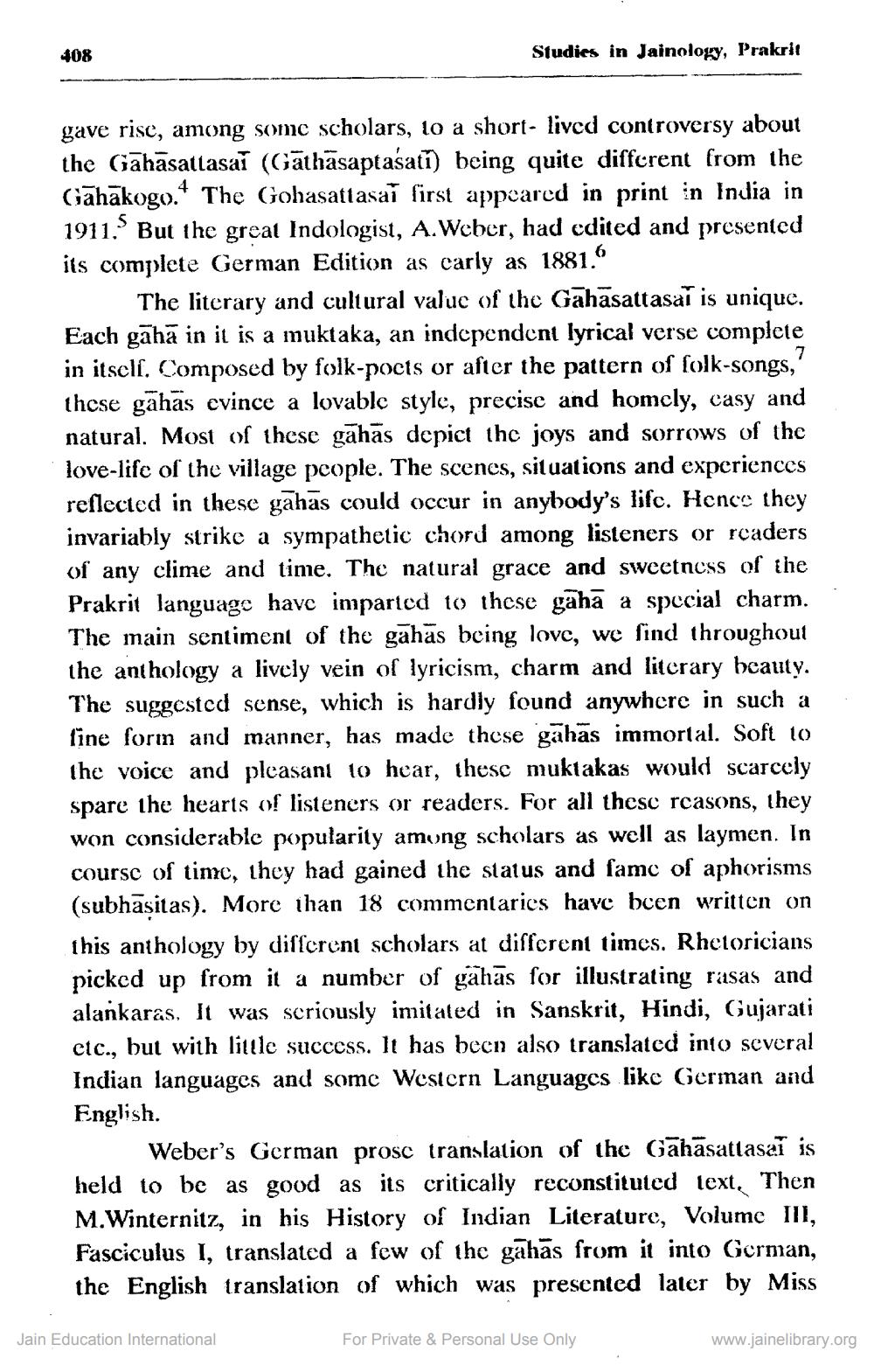________________
408
Studies in Jainology, Prakrit
gave rise, among some scholars, lo a short- lived controversy about the Gahāsattasai (Gathāsaptasatī) being quite different from the Gāhākogo.The Gohasattasas first appeared in print in India in 1911. But the great Indologist, A. Weber, had edited and presented its complete German Edition as carly as 1881.
The literary and cultural value of the Gahāsattasat is unique. Each gāhā in it is a muktaka, an independent lyrical verse complete in itself. Composed by folk-pocts or after the pattern of folk-songs, these gahas cvince a lovable style, precise and homely, casy and natural. Most of these gāhās depict the joys and sorrows of the love-life of the village people. The scenes, situations and experiences reflected in these gahas could occur in anybody's lifc. Hence they invariably strike a sympathetic chord among listeners or readers of any clime and time. The natural grace and sweetness of the Prakrit language have imparied to these gahā a special charm. The main sentiment of the gahās being love, we find throughout the anthology a lively vein of lyricism, charm and literary beauty. The suggested sense, which is hardly found anywhere in such a fine form and manner, has made these gahās immortal. Soft to the voice and pleasant to hear, these muktakas would scarcely spare the hearts of listeners or readers. For all these reasons, they won considerable popularity amung scholars as well as laymen. In course of time, they had gained the status and fame of aphorisms (subhasitas). More than 18 commentaries have bcen written on this anthology by different scholars at different times. Rhetoricians picked up from it a number of gahās for illustrating rusas and alankaras, It was seriously imitated in Sanskrit, Hindi, Gujarati etc., but with little success. It has been also translated into several Indian languages and some Western Languages like German and English.
Weber's German prosc translation of the Gahāsattasan is held to be as good as its critically reconstituted text. Then M.Winternitz, in his History of Indian Literature, Volume III, Fasciculus I, translated a few of the gahās from it into German, the English translation of which was presented later by Miss
Jain Education International
For Private & Personal Use Only
www.jainelibrary.org




